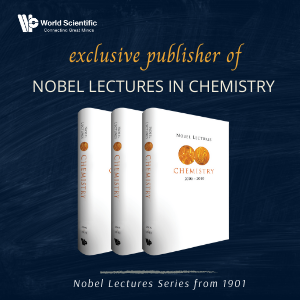System Upgrade on Tue, May 28th, 2024 at 2am (EDT)
Existing users will be able to log into the site and access content. However, E-commerce and registration of new users may not be available for up to 12 hours.For online purchase, please visit us again. Contact us at customercare@wspc.com for any enquiries.
Owing to the advances of vacuum ultraviolet and ultrafast lasers and third generation synchrotron sources, the research on photoionization, photoelectrons, and photodetachment has gained much vitality in recent years. These new light sources, together with ingenious experimental techniques, such as the coincidence imaging, molecular beam, pulsed field ionization photoelectron, mass-analyzed threshold ion, and pulsed field ion pair schemes, have allowed spectroscopic, dynamic, and energetic studies of gaseous species to a new level of detail and accuracy. Profitable applications of these methods to liquids are emerging.
This invaluable two-volume review consists of twenty-two chapters, focusing on recent developments in photoionization and photodetachment studies of atoms; molecules, transient species, clusters, and liquids.
Sample Chapter(s)
Introduction (15 KB)
Chapter 1.1: Introduction (547 KB)
Chapter 1.2: Experimental Section (243 KB)
Chapter 1.3: Applications of Velocity Mapping (653 KB)
Chapter 1.4: Conclusions (128 KB)
Contents:
- Part I:
- Velocity Mapping Studies of Molecular Photodissociation and Photoionization Dynamics (D H Parker)
- Coherent Control of Photodissociation and Photoionization (R J Gordon & L-C Zhu)
- Non-Adiabatic Dynamics Studied by Femtosecond Time-Resolved Photoelectron Spectroscopy (C C Hayden & A Stolow)
- Femtosecond Time-Resolved Photoelectron Spectroscopy of Molecules and Clusters by Photoion-Photoelectron Coincidence Detection (W Radloff)
- The Renner-Teller Effect and the Role of Electronically Degenerate States in Molecular Ions (P Rosmus & G Chambaud)
- Zero-Kinetic-Energy Photoelectron Spectroscopic Studies of Aromatic-Argon van der Waals Complexes (K Kimura)
- Mass-Analyzed Cation Spectroscopy Using Rydberg States: MATI and PIRI (P M Johnson)
- High Resolution Threshold Photoelectron and Photoelectron-Photoion Coincidence Spectroscopy Using Synchrotron Radiation (Y Morioka)
- Advances in Photoionization and Photoelectron Studies Using Third Generation Synchrotron Radiation and UV/VUV Lasers (C-Y Ng)
- Unimolecular Reactions of Molecular Ions and Cluster Ions — From Thermal Towards State-Selective Experiments (K-M Weitzel)
- Laser Two-Photon Ionization in Solution and on Surface in Ambient Air: Investigations Through Conductivity Measurement (T Ogawa)
- Photoelectron Spectroscopy at Liquid Surfaces (M Faubel)
- Part II:
- Dissociative Electron-Ion Recombination Studies Using Ion Synchrotrons (M Larsson)
- Dissociative Photodetachment Studies of Transient Molecules by Coincidence Techniques (R E Continetti)
- Mass Selected Anion-Zero Kinetic Energy Photoelectron Spectroscopy (U Boesl et al.)
- Photodetachment Photoelectron Spectroscopy of Transition Metal Oxide Species (L-S Wang)
- Detachment Processes for Molecular Anions (J Simons)
- Competition Between Autoionization and Predissociation in Molecular Rydberg States (S T Pratt)
- Electron Capture Processes by Free and Bound Molecules (E Illenberger)
- Visualization of Electron Correlations in Doubly and Triply Excited States of Atoms (C D Lin & T Morishita)
- High-Resolution Angle-Resolved Studies of Atoms and Molecules Using Advanced Electron Spectroscopy at the ALS (N Berrah)
- X-Ray Scattering and Fluorescence from Atoms and Molecules (S H Southworth et al.)
Readership: Researchers in physical chemistry, and atomic and molecular physics.













































































